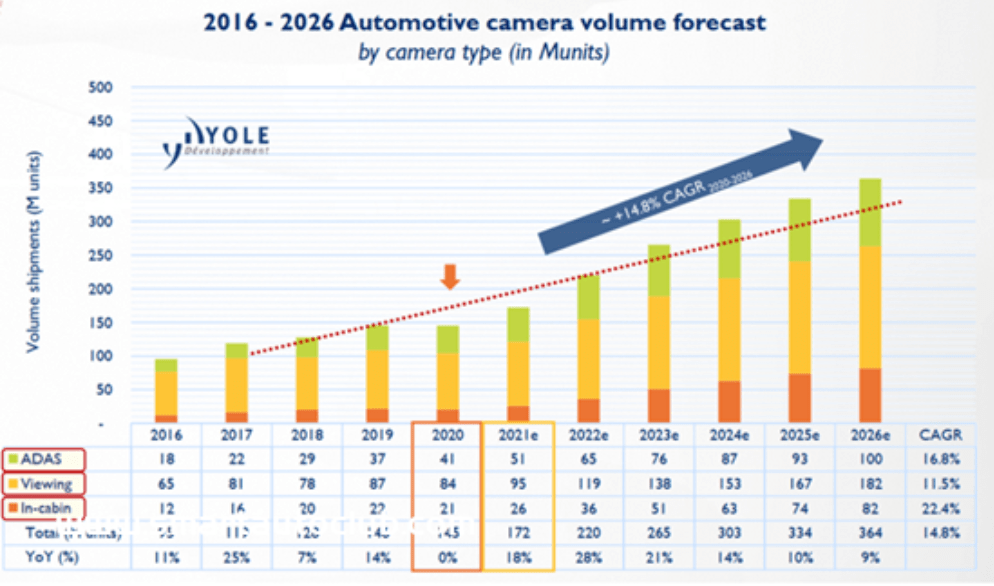Analysis of camera industry chain
2023-02-09
With the development of automotive intelligence, the use of on-board cameras has shown a rapid upward trend, and the market space is growing rapidly.
The market value of vehicle-mounted cameras has been improved by three factors
With the development of electric, intelligent and networked vehicles, cameras have become the core hardware, and the market demand space is constantly breaking through the ceiling. The conclusion comes from three aspects of analysis and judgment: first, the sales of new energy vehicles exceed expectations; Second, the number of cameras used in new smart cars is increasing; Third, the price of on-board cameras has increased.
Specifically:
First, the sales of new energy vehicles exceeded expectations. According to Yole's data, the global sales volume of vehicle-mounted cameras is expected to be 172 million in 2021 and 364 million by 2026. In other words, the market size of car camera will double in five years. In terms of the growth rate from 2020 to 2026, the growth rate of internal camera is the fastest, with CAGR reaching 22.4%; Secondly, the fastest growing is the perceptual ADAS camera, with a CAGR of 16.8%; Because these two types of cameras have hardly been used in cars before, the base of shipment volume is very low. However, the use of imaging cameras is still the largest. In order to continue to grow, considering the previous configuration on the vehicle, the CAGR growth rate is not the highest of the three categories, 11.5%

From the perspective of the car market, the sales of new energy passenger vehicles are showing a faster than expected development rate. According to the "Fourteenth Five-Year Plan", the penetration rate of new energy passenger vehicles will reach 24% in 2025. However, this plan may be realized this year.
Compared with the data of the previous two years, the global cumulative sales of new energy vehicles in 2021 was 2.98 million, with a penetration rate of 14.8%; Only 5.8% in 2020. According to the agency's prediction, if the sales volume of new energy vehicles can reach 5.5 million in 2022, the penetration rate of 24% will be achieved three years in advance.




